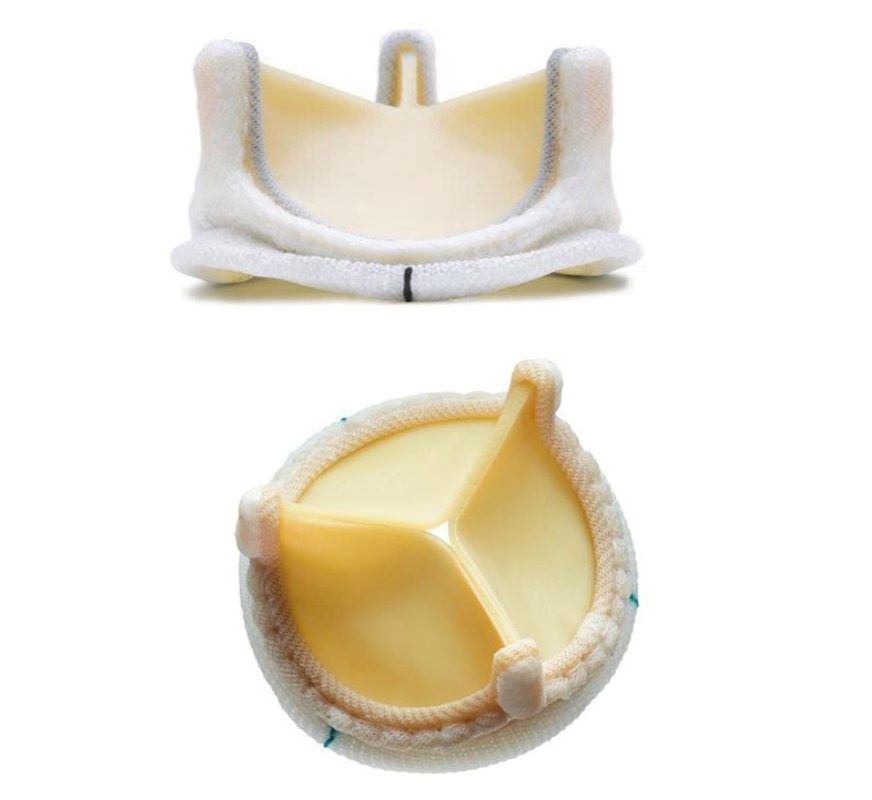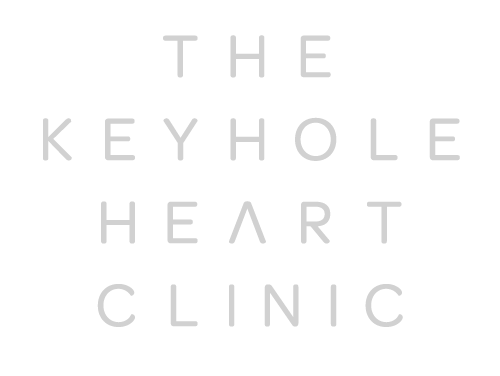Life Expectancy Without Treatment If You Have Aortic Valve Stenosis

As a heart surgeon speaking to patients, I want to discuss aortic stenosis, its impact on life expectancy, and the treatment options available. This is a topic close to my heart, as I’ve seen firsthand how proper treatment can dramatically improve both the quality and length of life for those with this condition.
Understanding Aortic Stenosis
Aortic stenosis is a condition where the aortic valve, which controls blood flow from your heart to the rest of your body, becomes narrow and stiff. This makes it harder for your heart to pump blood effectively. Imagine trying to water your garden with a kinked hose – that’s similar to what’s happening in your heart with aortic stenosis.
Impact on Life Expectancy
Without treatment, severe aortic stenosis can significantly shorten your life. Once symptoms develop – things like shortness of breath, chest pain, or fainting – the average survival is only about 2-3 years if left untreated[1]. That’s why it’s crucial to address this condition promptly.
The good news is that we can dramatically improve these numbers with proper treatment. Successful treatment of aortic stenosis can often restore your life expectancy to nearly normal for your age.
Treatment Options
We have several ways to treat aortic stenosis, and choosing the right one depends on your individual situation. The main options we’ll discuss are:
1. Traditional open-heart surgery
2. Minimally invasive “keyhole” surgery
3. TAVI (Transcatheter Aortic Valve Implantation)
Traditional Open-Heart Surgery
For many years, this was our primary method for replacing the aortic valve. It involves making an incision down the center of the chest and temporarily stopping the heart while we replace the valve. This approach gives us direct access to your heart and allows us to address any other issues we might find.
The advantages of open-heart surgery include:
– It’s a time-tested approach with excellent long-term results
– We can directly view and access your heart
– It allows us to perform additional procedures if needed (like bypass surgery)
The downsides include:
– It requires a longer recovery time
– There’s a larger incision and more post-operative pain
– It may not be suitable for older or frailer patients
For younger, healthier patients who need their valve replaced, this is still often an excellent option.
Minimally Invasive “Keyhole” Heart Surgery
This is an exciting development in heart surgery that allows us to replace your aortic valve through much smaller incisions. Instead of opening the entire chest, we make small incisions between your ribs. Using specialized instruments and cameras, we can perform the same valve replacement through these smaller openings[4].
The benefits of this approach include:
– Smaller incisions and less post-operative pain
– Faster recovery times – many patients go home in just 3-4 days
– Excellent long-term results, similar to traditional surgery
– Suitable for a wider range of patients, including some older individuals
The potential drawbacks:
– It’s a more technically challenging surgery, so it’s important to choose a surgeon experienced in this technique
– It may not be suitable for everyone, depending on your anatomy and overall health
For many patients, this “keyhole” approach offers the best of both worlds – the proven long-term benefits of surgical valve replacement with a quicker, less painful recovery. In fact, recent advancements have reduced recovery time from 3 months to just 3 weeks for many patients[6].
TAVI: A Revolutionary Approach
TAVI, which stands for Transcatheter Aortic Valve Implantation, is truly a game-changing innovation in treating aortic stenosis. This procedure allows us to replace your aortic valve without any surgical incisions on your chest. Instead, we typically insert a new valve through a small puncture in an artery in your leg[2].
Here’s how it works: We guide a catheter (a thin, flexible tube) through your blood vessels up to your heart. The new valve is compressed and attached to the end of this catheter. Once we have it perfectly positioned, we expand the new valve, pushing the old, diseased valve out of the way.
The advantages of TAVI are significant:
– It’s much less invasive than surgery – no chest incisions at all
– Recovery is typically very quick – many patients go home the next day
– It can be performed on patients who are too high-risk for traditional surgery
However, there are some important considerations:
– The long-term durability of TAVI valves is still being studied (though early results are promising)
– There’s a slightly higher risk of needing a pacemaker after the procedure
– It may not be the best choice for younger, healthier patients who are good candidates for surgery
TAVI has been a true lifesaver for many older or frailer patients who previously had no good options for treating their aortic stenosis[3].
Choosing the Right Option for You
Now that we’ve reviewed the main treatment approaches, you might be wondering which one is right for you. The truth is, there’s no one-size-fits-all answer. We need to consider several factors:
1. Your age and overall health
2. The severity of your aortic stenosis
3. Any other heart or health conditions you may have
4. Your personal preferences and goals
For younger, healthier patients (generally under 65-70), I often recommend either traditional open surgery or minimally invasive “keyhole” surgery. These approaches offer excellent long-term results and durability. The choice between open and minimally invasive often comes down to your anatomy and my assessment of which approach will give you the best outcome.
For older patients or those with other significant health issues, TAVI is often an excellent choice. It allows us to treat the aortic stenosis with much less stress on your body[5].
There’s also a “middle ground” of patients – often those in their 70s or early 80s who are still quite healthy. For these individuals, we carefully weigh the pros and cons of surgery versus TAVI. In many cases, if you’re a good candidate for surgery, that might still be the better long-term option. But we’ll discuss this in detail and make the decision together.
The Importance of Timing
One crucial point I want to emphasise is the importance of timing. If you’ve been diagnosed with severe aortic stenosis, it’s vital not to delay treatment. Even if you’re not experiencing severe symptoms yet, waiting too long can allow your heart to weaken, which can impact your long-term outcomes.
On the other hand, we don’t want to operate too early if your aortic stenosis is still mild or moderate. There’s an optimal window for intervention, and part of my job is to help you identify when that time has come.
Life After Aortic Valve Replacement
Regardless of which approach we choose, the goal is the same: to restore proper blood flow through your aortic valve and reduce the workload on your heart. Most patients experience significant improvements in their symptoms and quality of life after valve replacement.
After your procedure, you’ll have a period of recovery and rehabilitation. This is shorter for TAVI (often just a few days) and longer for surgical approaches (typically a few weeks to a couple of months). But in all cases, we’ll work with you to help you regain your strength and return to your normal activities.
Long-term, you’ll need regular follow-ups to monitor your new valve and overall heart health. With proper care, many patients can expect to live a normal lifespan after aortic valve replacement.
Conclusion: A Brighter Future with Treatment
I know we’ve covered a lot of information here, and it might feel overwhelming. But I want you to take away a message of hope. Aortic stenosis is a serious condition, but we have excellent treatments available. Whether it’s through traditional surgery, minimally invasive techniques, or TAVI, we can significantly improve both your quality of life and life expectancy.
Remember, you’re not alone in this journey. My team and I are here to guide you every step of the way, from choosing the right treatment approach to supporting you through recovery and beyond. Together, we’ll work to get your heart healthy and keep it that way for years to come.
Do you have any questions about what we’ve discussed? We are always here to listen and provide more information. Your health and peace of mind are our top priorities, and we want you to feel confident and informed as you move forward with your treatment.
Click here to watch our YouTube Video Series
Citations:
[1] https://www.bhf.org.uk/informationsupport/treatments/tavi
[2] https://www.topdoctors.co.uk/medical-articles/tavi-heart-surgery-for-aortic-valve-replacement
[3] https://www.thekeyholeheartclinic.com/services/valve-disorders/aortic-valve/aortic-stenosis/
[4] https://www.thekeyholeheartclinic.com/blog/exploring-aortic-valve-replacement-keyhole-heart-surgery-as-a-minimally-invasive-solution/
[5] https://royalpapworth.nhs.uk/our-services/cardiology-services/cath-labs/interventional-cardiology/transcatheter-aortic-valve-implantation-tavi
[6] https://guysandstthomasspecialistcare.co.uk/news/keyhole-heart-surgery-reducing-recovery/
[7] https://www.nhs.uk/conditions/aortic-valve-replacement/alternatives/
[8] https://www.circlehealthgroup.co.uk/treatments/tavi

